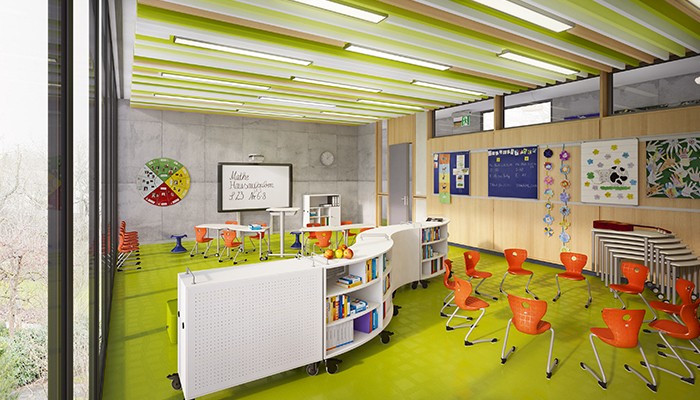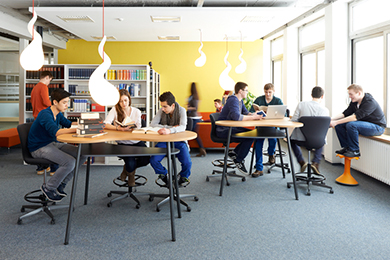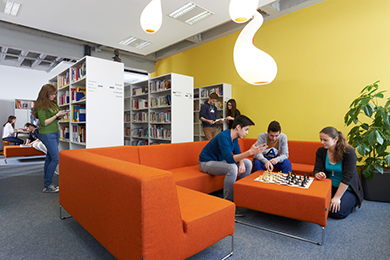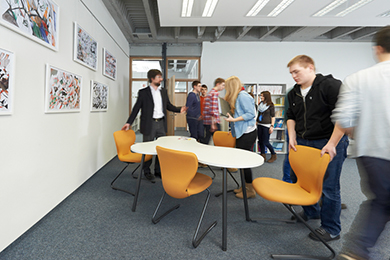School – learning and living space
Flexible furniture for functional learning landscapes.

-
The importance of the space.
Very early on in its life as a leading school furniture manufacturer the focus at VS was the spatial environment in the development of educational furniture. For instance, in 1913, VS’s founding company in Berlin had the exclusive right to manufacture and distribute Montessori materials in Germany. Maria Montessori wanted to help children exercise their abilities autonomously. Learning materials, but also furniture, rooms and architecture, had to be attuned to that aim.
-

-
The third teacher.
School architecture, spatial design and furniture can contribute significantly to activate educational potential. To use a term coined by the Reggio Emilia educationalist, Loris Malaguzzi, the space becomes “the third teacher” – alongside adults and fellow-students – and exercises a formative influence on children‘s educational achievements. It is especially important in full-day education that the design for the school’s learning and living space is differentiated.
-

-
Furniture that promotes movement.
In order to learn the head is in need of the whole body. Sameness of lessons combined with sitting still all the time leads to mental stagnation. The many spontaneous, every-day physical activities we engage in are of vital importance to health and performance; it is only thus that children can develop well. This is why schools today are schools in motion. Movement is integrated into lessons to help maintain attentiveness and concentration.
-
